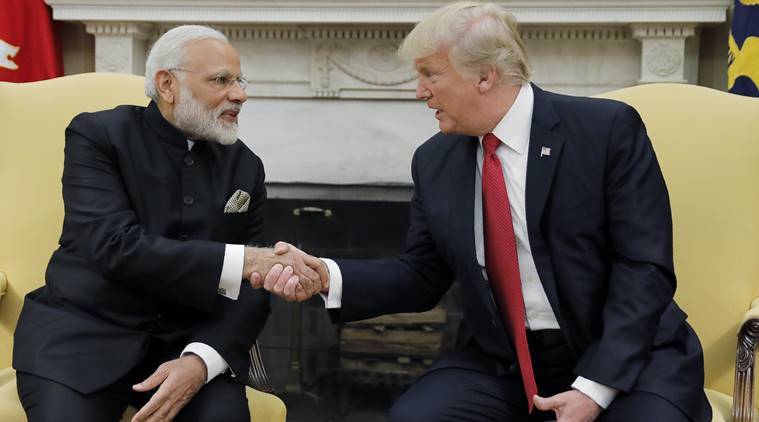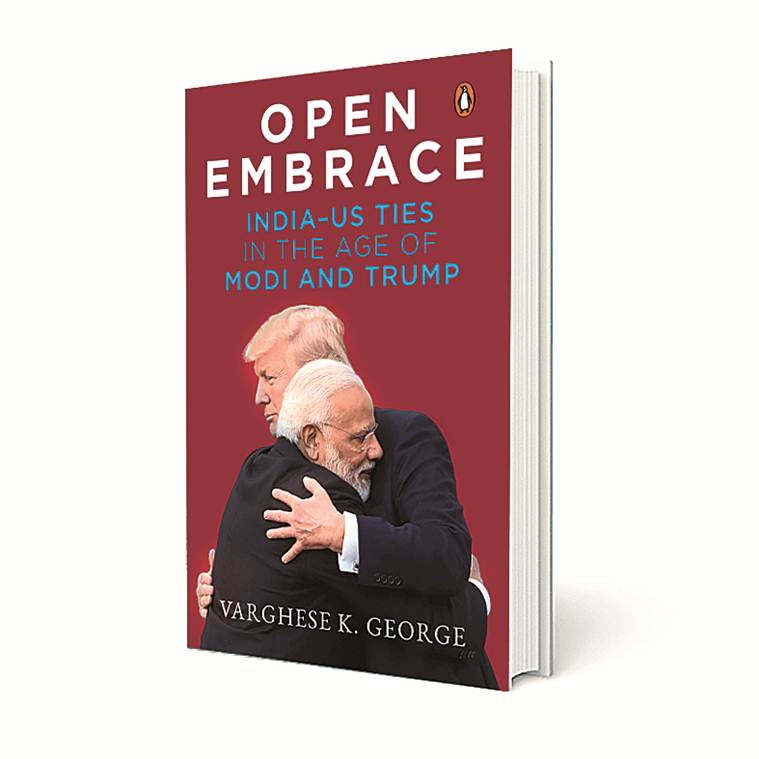How We Got Here
Bilateral relations between India and the US under two leaders with very different styles of operation

. Both Modi and Trump are strong personalities. It is inevitable that while chronicling the fallout of two landmark elections — in India and in America — this book should reflect on those events. (File photo)
I begin with a confession. As the 2016 American presidential election campaign entered its final lap, I was convinced that Hillary Clinton would win easily. There was no other way, I told myself, reassured by the confidence of having reported from Washington as a foreign correspondent for the previous 15 years. My son, a keen observer of the political scene in the United States, had been telling me all through the presidential primaries that eventually Donald Trump, not the Clintons, would move into the White House. But my stories from the campaign trail reflected my faith in the well-oiled election machine of the Clintons.
Hardeep Singh Puri, now a minister in the Narendra Modi government, was then living in New York. He read my election despatches and cautioned that they were way off the mark. “Trump is going to be elected on November 8, you watch,” he told me. I managed to speak some Americans whose inside campaign knowledge had convinced Puri. These men subsequently became powerful influencers in President Trump’s administration.
I wrote two stories in the final days of the campaign taking a positive view of Trump’s chances to balance my four previous pieces suggesting a Clinton victory. On the morning of November 9, I woke up to emails and text messages congratulating me for having sensed a Trump win. Later that day, when I went to the Foreign Press Center in New York, I was effusively praised for my perspicacity.
Varghese K George begins his open embrace of India-US ties in the age of Modi and Trump with a compelling account of how the author and Lalit K Jha, the indefatigable chief America correspondent of the Press Trust of India, decided on election night — by the flip of a coin, as it were — that victory would be Trump’s. They stood at a crossroad in Manhattan unsure whether to cover the results from Hillary’s victory party at the Jacob Javits Convention Center or from the Hilton Midtown on 53rd Street at 6th Avenue.
The author’s description of a forlorn Trump election night headquarters at the mid-size hotel when he and Jha arrived there brings back memories of how horribly the American media got it wrong about Trump. Indeed about American voters’ considerations when they chose to hand over the most powerful nation on earth and the world’s biggest economy to an untested and unpredictable businessman. That election night was lucky for some, like the author, Jha and me, but it represented the biggest credibility crisis for the free media ever.
America is yet to recover from that night — and how we all got there — which the author dwells on in great detail. The White House has just revoked CNN reporter Jim Acosta’s media credentials following an argument with the President after mid-term polls ended Trump’s monopoly on power. It is the same Acosta, who is quoted by George in a detailed chapter on “America First,” Trump’s 2016 clarion call.
The author reported on Modi’s landmark 2014 election campaign. It has left an indelible impression on George, which he carries into this book. Both Modi and Trump are strong personalities. It is inevitable that while chronicling the fallout of two landmark elections — in India and in America — this book should reflect on those events. But the author is a victim of the journalistic version of “localitis,” an affliction that often clouds the judgement of diplomats. Localitis is a tendency to draw conclusions based on one’s deep involvement in local situations as if they are more relevant than would objectively appear.
Modi and Trump are not similar leaders, as the author argues, despite superficial similarities in ideology and policies. Consistency has never been Trump’s virtue. His positions on issues have shifted depending on what suits him best: abortion is a case in point. Modi has been unequivocally consistent from his late teens through his entire public life. Actually, Modi has a lot more in common with Barack Obamathan with Trump in their respective political experiences.
George arrived in the US as The Hindu newspaper’s correspondent only towards the end of 2015. So he may be excused for not knowing intimate details of the first Modi-Obama meeting in September 2014. Both the American side and the Indians separately shared these details with Indian correspondents in Washington at that time. The political lives of Modi and Obama ran on parallel lines, as the two discovered at a private dinner at the White House residence.
That is why the two men got along so well early on, which produced results that went well beyond India-US relations. Trump has no empathy for Modi. From what I have observed in the White House Rose Garden and in the Oval Office, Trump is bored when he meets Modi. With the opportunities that are available to a foreign correspondent in Washington, the author could have offered more insights into the personal chemistry — or lack thereof — between them. This may be why Trump turned down India’s invitation to be chief guest on January 26, 2019.
The book is also well researched in other aspects and offers a wealth of material on India-US relations in the last two years. Few books have come out on this important bilateral relationship in the times of Modi and Trump. George has contributed a welcome addition to how history will judge these times.
The writer is a former Washington correspondent for an Indian newspaper






















 Open Embrace: India-US Ties in the Age of Modi and Trump; Varghese K George; Penguin Viking; 320 pages; Rs 599
Open Embrace: India-US Ties in the Age of Modi and Trump; Varghese K George; Penguin Viking; 320 pages; Rs 599
No hay comentarios:
Publicar un comentario